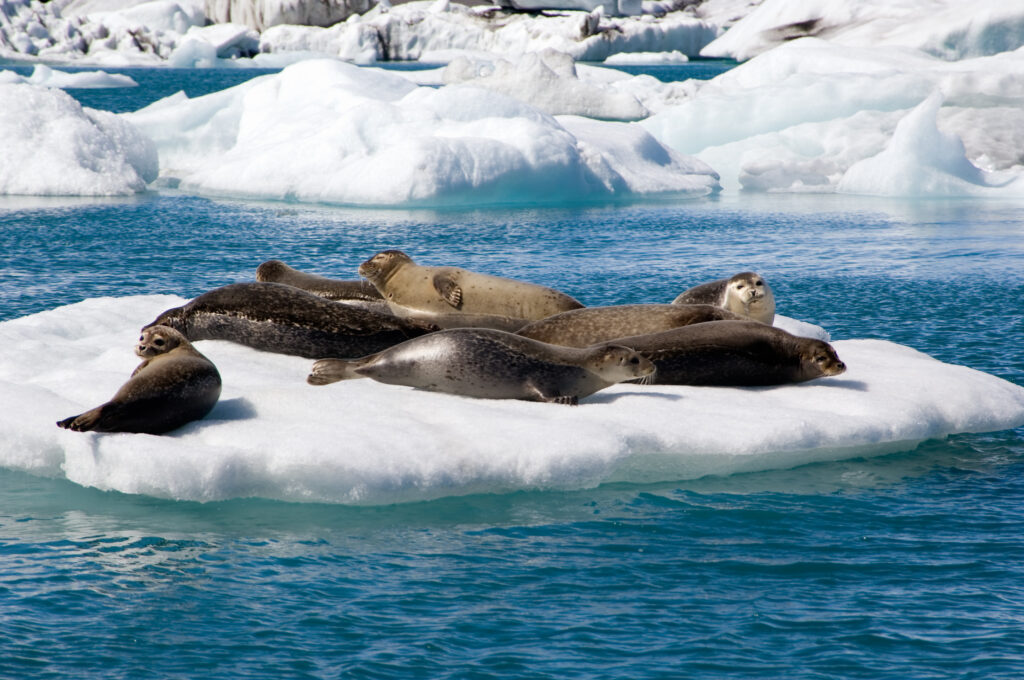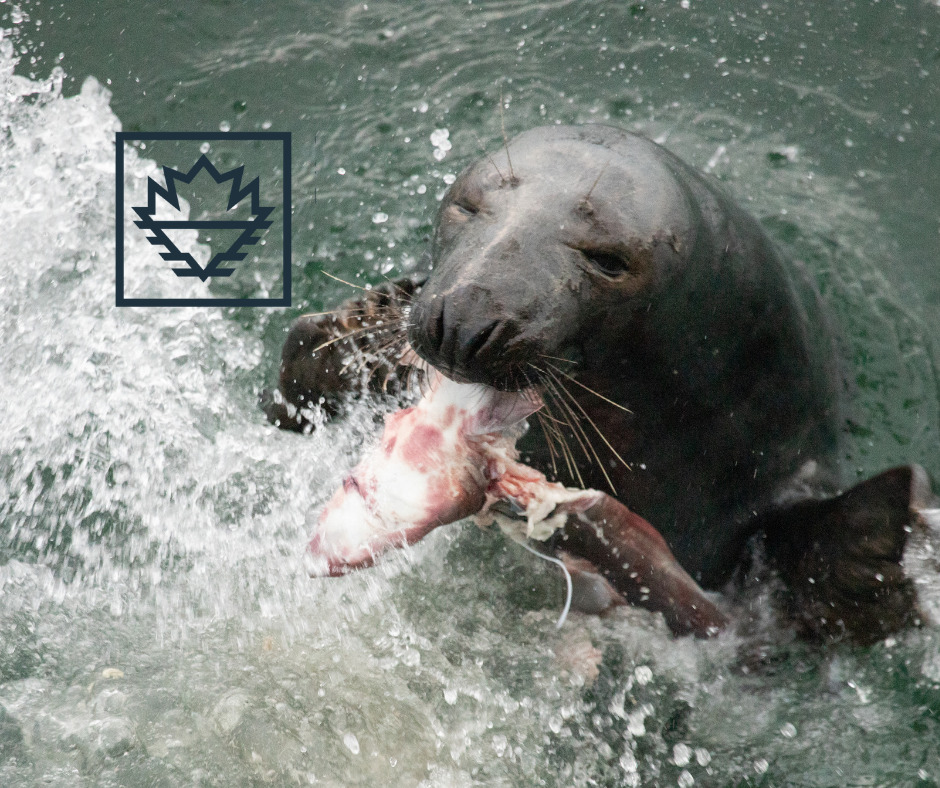UN Calls for “Responsible Consumption and Production” – Seal Products Fit the Bill
The United Nations always has a roadmap for the future of the planet, and people who follow the current roadmap – Canadians in particular – should consider consuming more seal products. To do so conforms perfectly with a lifestyle choice the UN calls “responsible consumption and production”.

The UN certainly understands the power of a good catchphrase. That’s why its most famous one is included in the title of the roadmap it’s been following since 2015, “Transforming our world: the 2030 agenda for sustainable development”. The UN was not the first to use the phrase “sustainable development”, but it brought it to prominence through its 1987 report, Our Common Future, commonly known as the Brundtland Report.
In support of its current roadmap, the UN has developed 17 Sustainable Development Goals, of which Goal 12 exhorts us to “Ensure sustainable consumption and production patterns”. Now in its public relations materials for Goal 12, it changes one word to come up with “responsible consumption and production” (italics added).
So what is “responsible consumption and production”, and how do seal products measure up?
Sealing Is Not Wasteful
According to the UN, each year about one-third of all food produced in the world, or 1.3 billion tons, “ends up rotting in the bins of consumers and retailers, or spoiling due to poor transportation and harvesting practices.” In 2016, it says, 13.8% of food production was lost in the supply chain – harvesting, transportation, storage and processing.
So responsible consumption and production means not being wasteful, and sealers hate waste.
The primary products of sealing are meat for food and fur for clothing. But Inuit and indigenous communities also use the brain, eyes, tongue, heart, liver, kidneys and intestines.

As for the commercial sealers of Newfoundland and Labrador, after harvesting the loins, flippers and ribs, the fat is used to make omega-3 dietary supplements. The only parts that are discarded back into the ocean are the thighs, organs and bones, because there is currently no market for them, but even these go to feed fish, which in turn feed both seals and humans. Also, ways are now being sought to turn these scraps into food for pet cats and dogs.

As for the rest of the supply chain, there is almost none of the “rotting in bins” the UN says happens to so much food. Like most meats, seal meat is frozen right up to the point of consumption, plus any frozen meat is safe to eat almost indefinitely and good to eat for months. Highly perishable produce, like fresh fruit and vegetables, is another story entirely.

Sealing Is Sustainable, Does Not Harm the Environment
The UN also warns of a range of human activities, including “overfishing and marine environment degradation”, that are reducing the “ability of the natural resource base to supply food.”
So responsible consumption and production means that any harvesting of marine resources must be sustainable, and done in ways that don’t harm the environment. Again, sealing in Canada fits the bill.
Let’s look at the largest hunt, the commercial harvest of harp seals off Newfoundland and Labrador. Of the six seal species found in Canada, harp seals in the Northwest Atlantic are the most numerous, thought to number 7.4 million. The population has also been growing steadily for decades, and may even be at an historical high.
This growth is happening in part because government-set quotas for the sealing industry are very conservative, and even then, the industry has had trouble meeting its quotas in recent years. This has been due to two factors: climate change has seen the retreat of the ice floes on which harp seals haul out, making the seals less accessible; and markets for seal products have been depressed due to campaigning by animal rights groups.
In short, Canadian sealing is not only sustainable, but could almost certainly support a far larger hunt.
Meanwhile, it is believed by the fishing industry and others that the harp seals of the Northwest Atlantic are now eating so much – estimated at between 11.1 million and 14.8 million tons/year – that they are threatening commercial fish stocks. To put this in context, in 2018 the Atlantic Canada fishing fleet landed a total of just 608,000 tons.
As for any “environment degradation”, there is none. Hunting for wildlife, including seals, is by far the most benign way to produce animal protein. In comparison, the environmental impact of intensive livestock farming can be considerable, as can destructive fishing methods like bottom trawling.

Sealing Is Energy-Efficient, Clean
And the UN warns that the food sector “accounts for some 30% of the world’s total energy consumption and 22% of total greenhouse gas emissions.”
So responsible consumption and production calls on the food supply chain to be energy-efficient and produce as little greenhouse gasses as possible. Once again, the sealing industry passes with flying colours.
There’s room for improvement, of course, like switching all sealing boats, processing plants and delivery trucks to renewable energy. But as a means of producing animal protein, wildlife hunts will always have lower energy inputs than livestock farming, because there is no requirement to maintain the animals throughout their lives. By extension, wildlife hunts also emit far smaller volumes of greenhouse gasses.
This is not the case, however, for all marine harvests. A 2021 study estimated that bottom trawling contributes between 600-1,500 million tons a year of the greenhouse gas carbon dioxide by releasing it from the sea floor. This is approximately equivalent to emissions of the aviation industry.
All in all, then, sealing should rank high on the UN’s scale of “responsible consumption and production”, especially if you live near the point of production. Remember that the next time you’re in Toronto or Montreal shopping for your family’s dinner. A kangaroo steak followed by a platter of tropical fruits sounds nutritious and delicious, but the UN would recommend a juicy seal loin and locally grown strawberries or an apple. And remember to clean your plate!
Sources:
- https://www.un.org/ga/search/view_doc.asp?symbol=A/RES/70/1&Lang=E
- https://en.wikipedia.org/wiki/Our_Common_Future
- https://www.un.org/sustainabledevelopment/sustainable-consumption-production/
- http://canadiansealproducts.ficwebhosting.com/products/seal-oil
- https://www.goodhousekeeping.com/food-recipes/cooking/a31899638/how-long-does-frozen-meat-last/
- https://www.dfo-mpo.gc.ca/species-especes/profiles-profils/harpseal-phoquegroenland-eng.html
- https://www.dfo-mpo.gc.ca/stats/commercial/land-debarq/sea-maritimes/s2018aq-eng.htm
- https://en.wikipedia.org/wiki/Bottom_trawling
- https://www.theguardian.com/environment/2021/mar/17/trawling-for-fish-releases-as-much-carbon-as-air-travel-report-finds-climate-crisis



